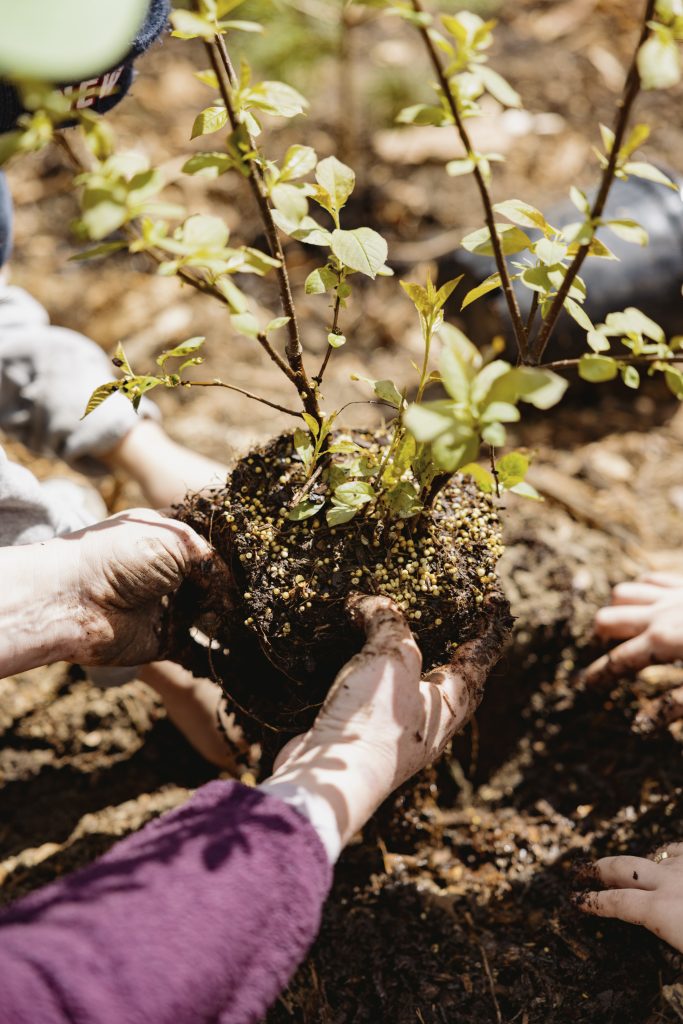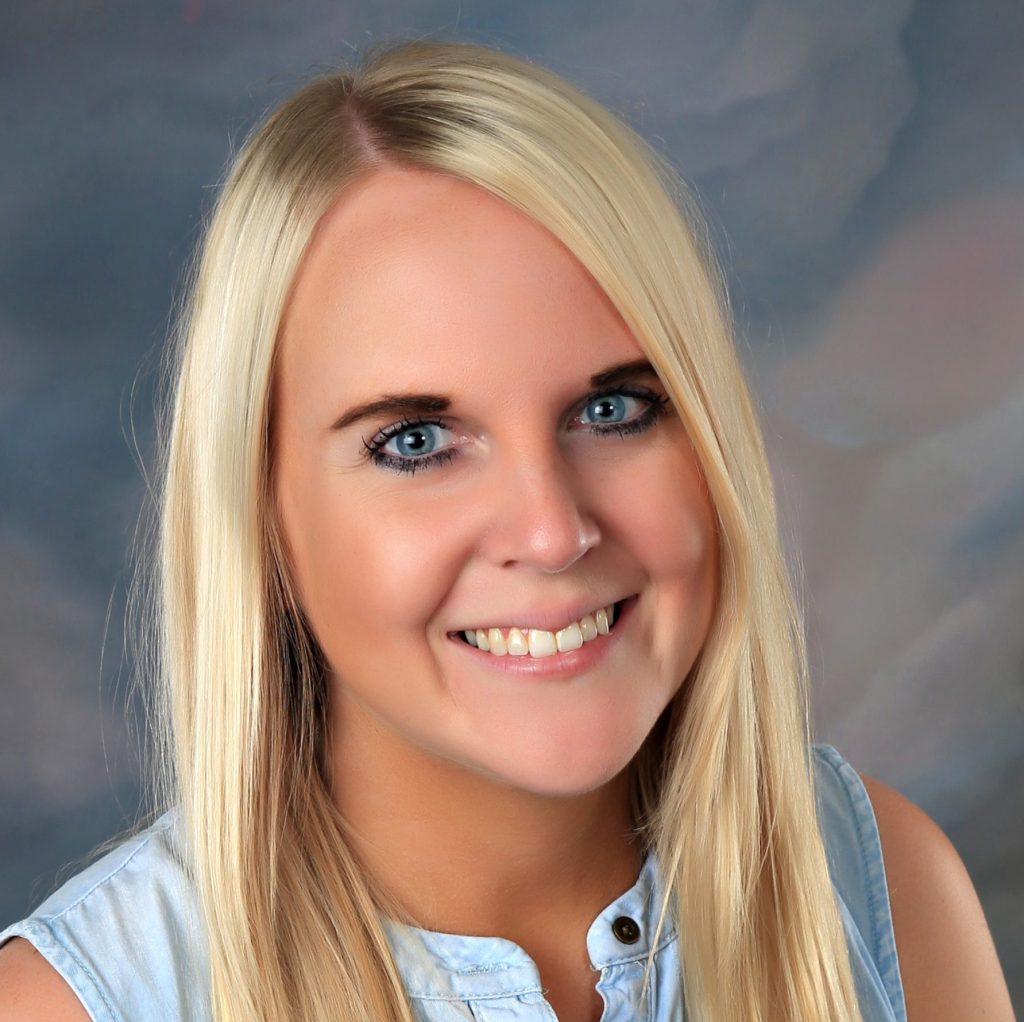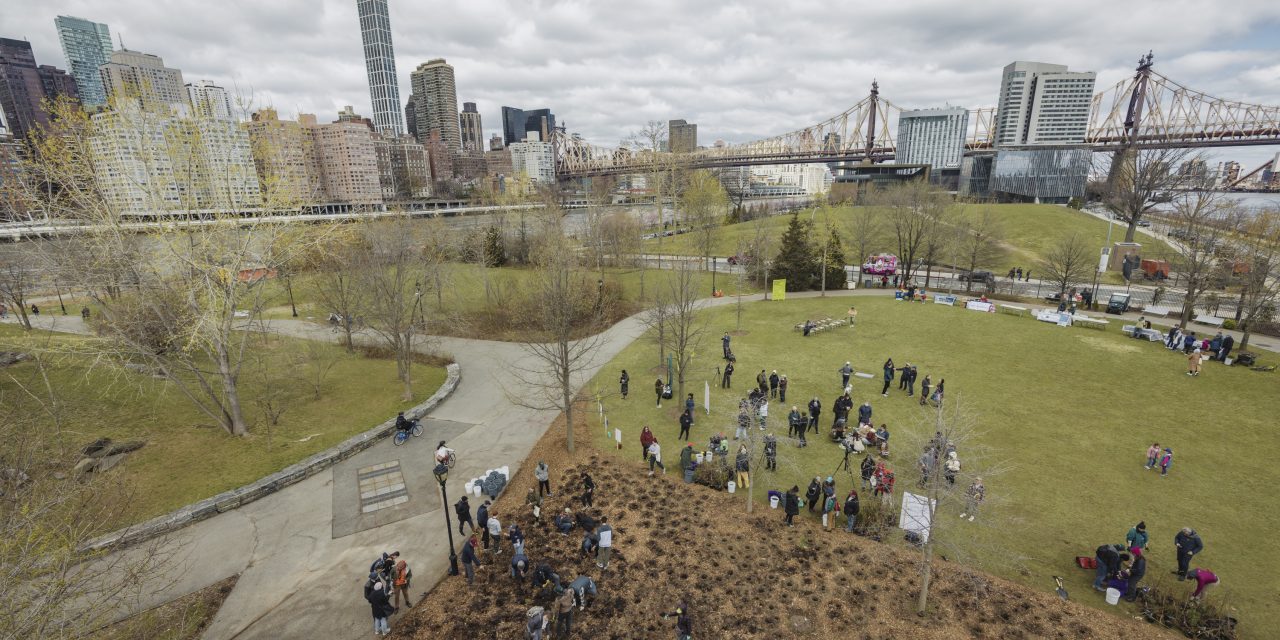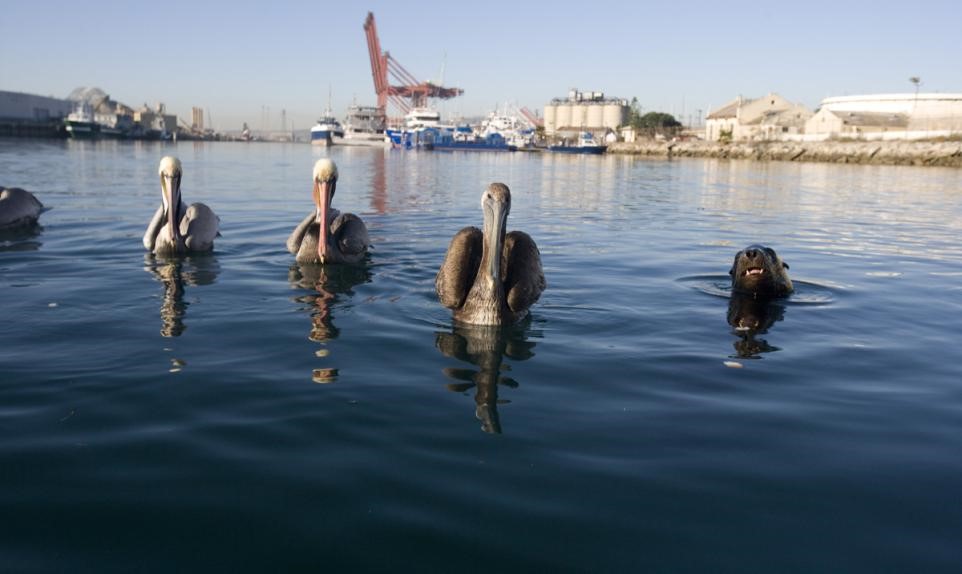The Manhattan Healing Forest, a unique green space known as a pocket or Miyawaki forest, was recently established on New York City’s Roosevelt Island. The demonstration project aims to shed light on innovative methods for flood resilience and urban greenery replenishment within densely developed landscapes.
This is the first green space of its kind in New York City, utilizing a methodology developed by Japanese botanist and plant ecology expert Akira Miyawaki. The approach draws inspiration from natural ecosystems to create multi-layered, dense, and diverse forests in as little as 20-30 years. The low-maintenance forests can be as small as 3 m2 (32 ft2) in area, making them attractive candidates for cities looking to build climate resilience.
The Miyawaki Method and Stormwater Absorption
Creating a Miyawaki forest begins with identifying suitable vegetation and preparing permeable ground that absorbs water rather than creating runoff. Planters should then introduce native tree species in a random pattern, with three to four saplings per square meter, imitating the growth of natural forests.

The density of a Miyawaki forest brings numerous benefits, including enhanced carbon capture, pollution filtration, and resistance against flooding and landslides. The increased canopy cover helps to minimize the impact of rainfall, provides more shade, and reduces urban heat-island effects. Additionally, the multi-layered trees in the forest act as a green wall, offering protection against storm surge along coastlines.
The pocket forest concept distinguishes itself from traditional green space and park designs through its dense vegetation and underground connectivity. Close planting facilitates root interaction and nutrient exchange, enhancing the resilience and growth of the forest ecosystem. While visitor experience remains important, the primary focus of pocket forests is on nature conservation and ecosystem restoration, leveraging the collective benefits of green spaces for both human and environmental health.
The Manhattan Healing Forest was planted in April 2024, and organizers from iDig2Learn (New York City) — a community-based nonprofit group focusing on connecting families with nature — are eager to track its ability to absorb stormwater.
“What is immediately apparent is that the forest ground is spongy and bouncy in direct contrast to the compacted grassy lawn adjacent to the site,” said Christina Delfico, iDig2Learn’s founder.
Delfico, who initiated the Manhattan Healing Forest project, reached out to SUGi, an international organization that funds and promotes the creation of pocket forests. This was SUGi’s 200th pocket forest internationally and 15th in the United States. Additional partners include the Roosevelt Island Operating Corporation (RIOC; New York City) and the Lenape Center (New York City), a local Indigenous group that provided guidance on selecting native plants.
Site and Plant Selection
Project partners chose Roosevelt Island as the forest’s site for several reasons, including its existing role as a vital green space amid the urban landscape of Manhattan. The island’s geographical characteristics, such as its proximity to water and historical susceptibility to heat and flooding, made it an ideal setting to prove the benefits of the Miyawaki forest concept.

Volunteers planted 1,500 trees amongst the 372-m2 (4,000-ft2) Manhattan Healing Forest, including 47 native species such as the Eastern White Pine, New York Fern, and White Oak.
“It was important to all the partners to only use native plants, which simply means regional plants that have grown here for centuries and therefore have evolved alongside the birds and butterflies that depend on them to survive,” Delfico said.
Plant selection for the forest was a collaborative effort involving experts from various backgrounds, including horticulturists from RIOC, Indigenous communities, and environmental organizations. Emphasizing the importance of native plants, the partnership prioritized species that have thrived in the region for centuries, fostering symbiotic relationships with local wildlife. Insights from the Lenape informed the selection process, drawing on historical records and traditional knowledge to ensure the inclusion of culturally significant species.
Pocket forests have been planted on every continent except Antarctica, and while the Manhattan Healing Forest represents a significant milestone for New York City, similar initiatives continue across the world, guided by SUGi and driven by local community engagement.
Top image courtesy of Dino Kuznik/SUGi

ABOUT THE AUTHOR
Michelle Kuester is a staff member of the Water Environment Federation, where she serves as Associate Editor of Stormwater Report and Water Environment & Technology magazine. She can be reached at mkuester@wef.org.






